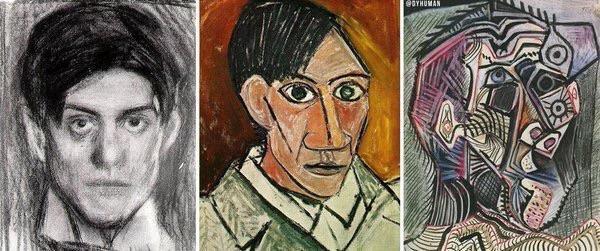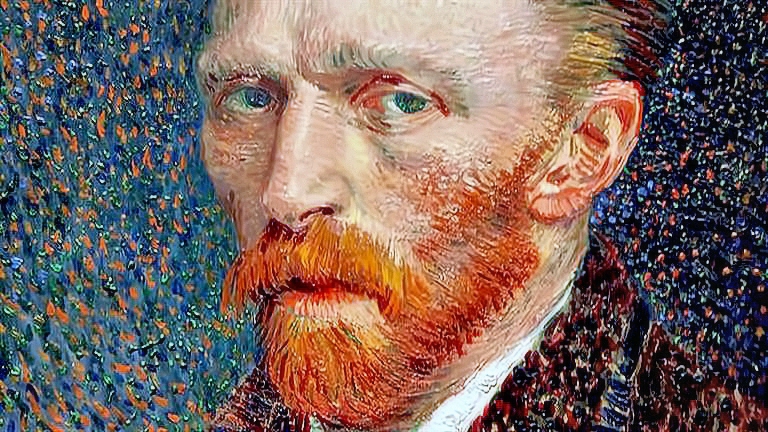Early Modernism and Modernism Art
Introduction
Modern art involves artistic works that include paintings and sculptures that were produced around the 1860s to 1970s. Early modernism and modernism art was characterized by the artists’ styles and philosophies produced during this era. In this study, we will evaluate the artistic works of Vincent Van Gogh and Pablo Picasso. Moreover, we will compare their artworks, for instance, paintings and sculptures, in relation to the personal or national identity using the various styles employed by the two early artists of modernism. Furthermore, the study looks deep into the impacts of industrial development on artwork in the United States in the nineteenth century.
Pablo Picasso Self-Portrait
In 1901, Pablo Picasso made a painting self-portrait of himself. This portrait describes and reveals his progress in life and art, as well as his personality. This painting of self-portrait was painted during his second stay in Paris. He was only twenty years old at that time, but he appears to be older in the portrait. His face appears to be drawn and emaciated due to the hardships he encountered during the Parisian winter (Picasso, Dabrowski, & Hollevoet, 2010). Furthermore, the furious pallor of his face, thin beard, the feeling of sadness and loneliness depicts what he was going through. Besides, cool tones, for instance, the deep purple color of the coat and the light brushwork, reflect on his self-denial. This portrait is essential as it gives an exceptional insight into the deep depression that Pablo went through following his friend’s death in 1901. His friend, Carlos Casagemas, died as a result of suicide. In self-portrait 1901, Picasso allows the world to see his pain, sadness, and loneliness as he tries to cope with his friend’s grief. The light blue color and purple coat show the environmental and physical coldness of the harsh Parisian winter. In addition, it brings out a sense of emotional detachment from the environment. The blue background color signifies it is night as it depicts his mood, and this means that Picasso was not able to sleep due to his despair and instead, he was wandering in Parisian streets at night. He uses his styles to paint his self-portraits, reflecting on changes in himself, lifestyle, and beliefs. The portrait was relatively profound, and his candid and honest look at the viewer helps us connect to him directly.
Vincent Van Gogh Self-Portrait
Vincent Van Gogh made one of the most incredible paints a few months before his death. He made a self-portrait of himself with undulating background and a fixed and rigid expression on his phase depicting a fascinating contradiction. His personal identity was heavily tied to his artistic works. The self-portrait of 1889 has striking elements, that is, the whirling and chaotic background. At this time, he had mental problems (Walker et al., 2017). He used to paint himself as he lacked the money to pay the models. He a variety of styles and subjects such as portraiture, landscape, and still life, but his self-portrait has defined his identity as an artist. In this self-portrait, he portrayed himself at work, with brushes in hand. The paint depicts mentally ill people as his portraits are common in individuals suffering from depression and psychosis.
From the two paintings, the artists reveal their personal life experiences to the world. Pablo Picasso’s artwork expresses his feeling of sadness and grief due to his friend’s death. On the other hand, Vincent Van Gogh expresses his mental challenges and sufferings. Also, he used art and believes that it is the only way to fit into society (Van Gogh-Bonger & Gayford, M. (2018). His painting depicts a psychotic state as the background appears to be restless all over the ornament. I chose the two artworks to bring out the issues early modernism Art faced in the past and relate them to the present. Vincent Van Gogh had the ability, but he lacked the money to pay the models, and instead, he decided to paint himself. Also, the significance of these artworks is that the artists can bring out their sorrows and challenges through their works, yet society cannot appreciate their efforts when they are here on earth.
How industrial advances in the nineteenth century impacted art in the United States
Industrial advancement has had a significant impact on impressionists and post-impressionists in the nineteenth century. It was a time of dramatic change and growth as the nation had shifted from farming to an industrial economy. The emergence of new products such as metal paint tubes and tube paints made artists more flexible. It also impacted the lives of artists indirectly. For instance, the railroads, densely populated cities, and technology and machines’ availability made the artists catch fleeting moments quickly.
Most importantly, romanticism, realism, and impressionism were enhanced in the industrial revolution in the United States of America. The industrial revolution stimulates the growth of romanticism as a real phenomenon. This included a true vision of modern life, actual figures, and objects expressed realistically (Dumont, 2016). For instance, Joseph Turner, a romantic landscape painter, benefited a lot from the industrial revolution as he used light, color, and atmosphere to accomplish his artworks. Generally, the industrial revolution has led to freedom, equality, and connection to nature, which has favored current artists.








